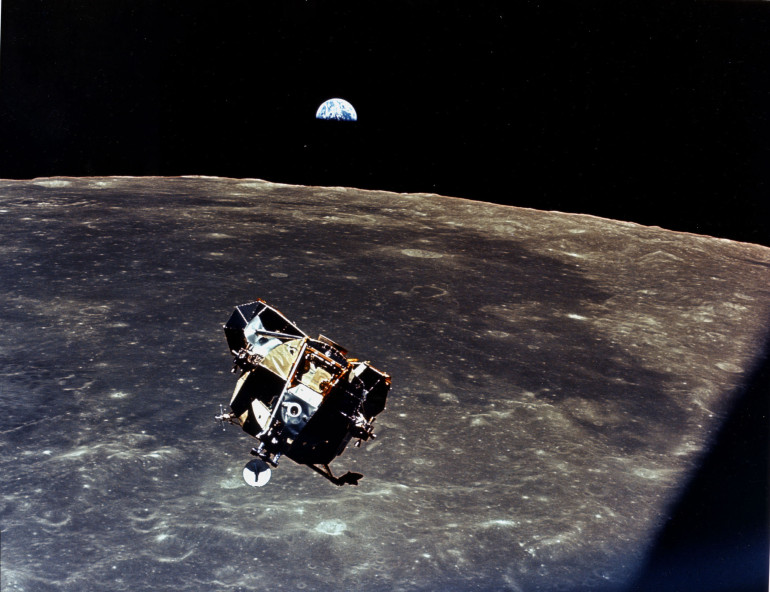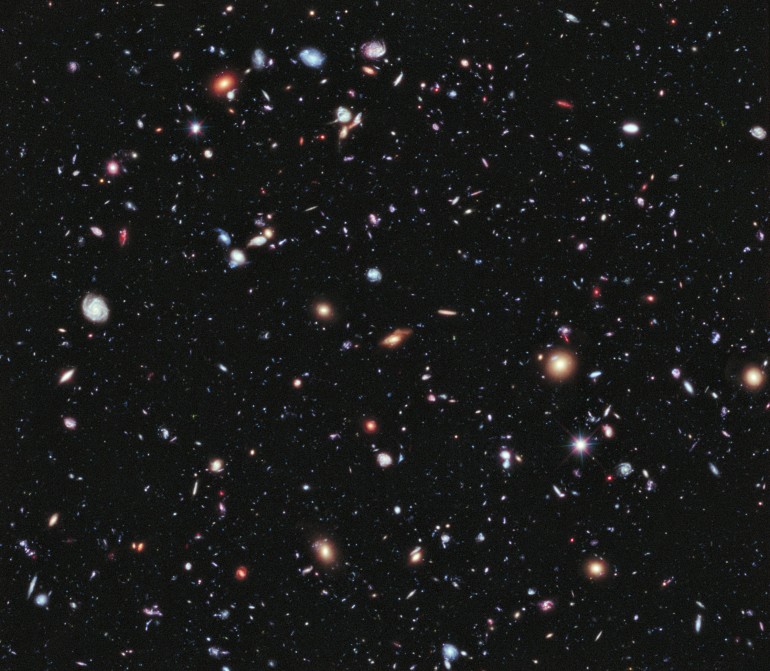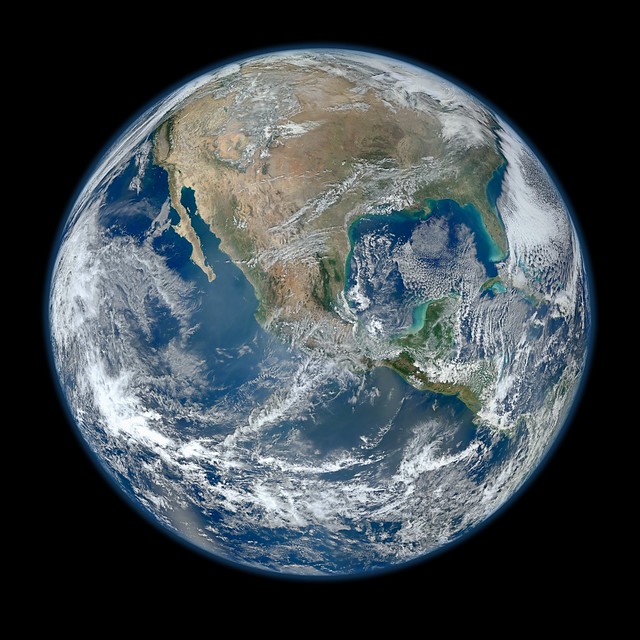Every Human Being
It is crazy to think about the fact that, outside of Michael Collins, every human being, living or dead, was contained within the frame of this picture.
 Image via NASA.
Image via NASA.
As always, click the image for wallpaper size.
It is crazy to think about the fact that, outside of Michael Collins, every human being, living or dead, was contained within the frame of this picture.
 Image via NASA.
Image via NASA.
As always, click the image for wallpaper size.
Are you ready to space out? 100,000 Stars is an interactive 3D map of our Milky Way Galaxy created by the folks over at Google. It accurately plots 100,000 local stars pulling data from a range of sources, including NASA, the European Space Agency (ESA), and the Bright Star Catalog.
100,000 Stars is an interactive visualization of the stellar neighborhood created for the Google Chrome web browser. It shows the real location of over 100,000 nearby stars. Zooming in reveals 87 individually identified stars and our solar system. The galaxy view is an artist’s rendition.
Instructions: Pan using your mouse and zoom in/out using your touchpad or mouse wheel. Click a star’s name to learn more about it.
Warning: Scientific accuracy is not guaranteed. Please do not use this visualization for interstellar navigation.
Be sure to take the tour. This is a WebGL Google Chrome Experiment, so it’ll run best on Chrome or Safari and with a decent graphics card. Damn nature, you pretty.

Image courtesy of NASA
NASA has recently released a new Deep Field image called eXtreme Deep Field (XDF) that improves on the older Ultra Deep Field (UDF) image. The XDF is the deepest image of the sky ever obtained and reveals the faintest and most distant galaxies ever seen. This image is a composite of nearly ten years worth of photographic exposures taken by the Hubble Space Telescope – over 2,000 photographs totaling 22.5 days worth of total exposure time. Nearly everything you see in the picture is a galaxy containing billions of stars.
The new full-color XDF image reaches much fainter galaxies and includes very deep exposures in red light from Hubble’s new infrared camera, enabling new studies of the earliest galaxies in the universe. The XDF contains about 5,500 galaxies even within its smaller field of view [than the UDF]. The faintest galaxies are one ten-billionth the brightness of what the human eye can see.
The universe is 13.7 billion years old, and the XDF reveals galaxies that span back 13.2 billion years in time. Most of the galaxies in the XDF are seen when they were young, small, and growing, often violently as they collided and merged together. The early universe was a time of dramatic birth for galaxies containing brilliant blue stars extraordinarily brighter than our sun. The light from those past events is just arriving at Earth now, and so the XDF is a “time tunnel into the distant past.” The youngest galaxy found in the XDF existed just 450 million years after the universe’s birth in the big bang.
Click on the image above for the gigantic 1.4MB image. And keep looking up.
There are two definitions for a blue moon. The original definition, given by the Maine Farmers’ Almanac (published in 1937), says that a blue moon is the third full moon in a season — spring, summer, autumn or winter — that has four full moons instead of the usual three. However the definition changed when J. Hugh Pruett, writing in the March 1946 issue of Sky and Telescope, misinterpreted the original definition to mean the second full moon in any given month. That version was popularized after being repeated in a broadcast on National Public Radio’s Star Date in 1980. The second-full-moon-in-a-month definition was also used in the board game Trivial Pursuit as well as education materials in the 80’s and the definition has stuck! You can read the long version of this story at Sky & Telescope. Below are lists of the many other types of full moons.
This is a photo taken from above a lightning storm over West Africa by André Kuipers during an extended stay aboard the International Space Station. Lightning storms are a common sight for those on the space station. There are many millions of lightning flashes on Earth everyday. Considering that the ISS orbits Earth 16 times a day you can bet the IIS crew gets quite a show.
NASA has recently published highest resolution image of the Earth from space ever. The 64-megapixel image of Earth was captured by the VIIRS instrument on NASA’s most recently launched Earth-observing satellite, the Suomi NPP. You can read more about the Suomi NPP at its official website.

Photo via NASA/NOAA/GSFC/Suomi NPP/VIIRS/Norman Kuring
Make sure to see this sucker full size to really appreciate the details and download it for your desktop. We all live in a beautiful place.
Yesterday (Feb. 24, 2011), a rather large flare (M 3.6 class coronal mass ejection) occurred near the edge of the Sun. It blew out a gorgeous, waving mass of erupting plasma that swirled and twisted over a 90-minute period . In the words of to the Solar Dynamics Observatory:
This event was captured in extreme ultraviolet light by NASA’s Solar Dynamics Observatory spacecraft . Some of the material blew out into space and other portions fell back to the surface. Using a cadence of a frame taken every 24 seconds, the sense of motion is, by all appearances, seamless. Sit back and enjoy the jaw-dropping solar show.
Per usual, this video is also best enjoyed full screen.
The NOAA (National Oceanic and Atmospheric Association) here in Boulder, Colorado has issued an alert. The alert states that recently there have been large solar explosions (coronal mass ejections is what the scientists call them) on the sun. These flares are creating large x-ray bursts. The SEC (Space Environment Center) issues alerts at the M5 (5x10E-5 Watts/m2) and X1 (1x10E-4 Watts/m2) levels. As you can see here, this has happened three times in the past two days. Below is a photo of one of todays flares. Here is a great video (mpeg), constantly updated, of the sun’s activity.
There have been over 18 alerts given by the SEC during the last two days for large x-ray and radio-wave bursts. Strong solar radio bursts (those M5 and greater) may cause major disruptions in satellite and other spacecraft operations, power systems (thus knocking out electric power), high frequency communications, and navigation systems. High altitude aircraft crews and passengers on polar routs are also susceptible to radiation hazards during similar events. However, there is one cool bonus effect of coronal mass ejections… the northern lights become much more spectacular and even visible from the northern US.